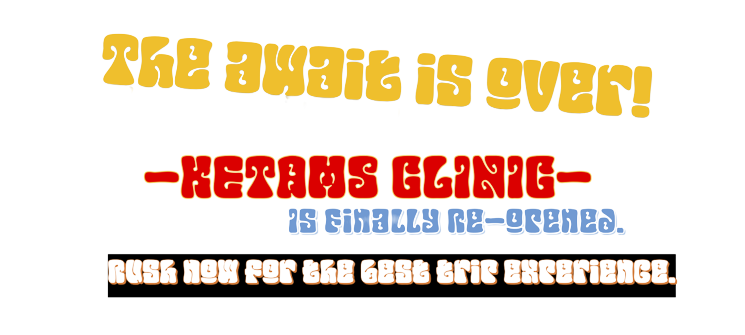Psychedelic Mushrooms
Guide to Growing Magic Mushrooms
Beginner’s Guide to Growing Magic Mushrooms at Home
Curious about how to grow magic mushrooms at home? You’re not alone. Interest in psychedelics and their potential benefits has surged over the past decade, with more people exploring natural ways to enhance mental health, creativity, and self-discovery. In this guide, we’ll walk you through the essentials of home cultivation—step-by-step, safe, and simple.
Whether you’re interested in therapeutic use, microdosing, or expanding your knowledge of hallucinogens, this article will equip you with the right tools, techniques, and legal considerations. Let’s dig in.
The Legal Landscape of Home Cultivation
Before starting, understand the legal status of magic mushrooms in your region. In many countries, psilocybin—the active compound—is still illegal. However, cities like Denver, Oakland, and Santa Cruz in the U.S. have decriminalized personal possession and cultivation for non-commercial use.
Globally, countries like Jamaica, Brazil, and Portugal have taken more tolerant stances. Still, check the most up-to-date legislation through credible sources like MAPS or the Psychedelic Legalization Tracker by Psychedelic Alpha (DR 91–92).
If you’re unsure, it’s always safest to speak with a local attorney familiar with controlled substances.
Why Grow Magic Mushrooms at Home?
Many people prefer cultivating their own mushrooms to avoid unreliable sourcing or contamination issues. Growing at home ensures:
- Cost savings
- Dosage control
- Purity and safety
- Educational value
Moreover, the act of cultivation itself can be a mindful and meditative process—another reason why psilocybin cultivation is growing in popularity among holistic communities.
If you’re new to psychedelics and hallucinogens, our pillar page covers everything from product types to usage guides.
Understanding Magic Mushrooms
Magic mushrooms refer to fungi containing psilocybin, which the body converts into psilocin—triggering altered perceptions and emotional experiences. The most common species used in cultivation is Psilocybe cubensis.
To understand the different varieties, check out our guide on what psychedelic mushrooms look like, including Liberty Caps and Golden Teachers.
Research from institutions like Johns Hopkins Medicine (DR 93) continues to validate psilocybin’s ability to help with depression, PTSD, and addiction.
Required Supplies for Growing
You don’t need a lab to grow mushrooms—just a few simple tools:
- Spore syringe or print
- Brown rice flour (BRF) and vermiculite
- Mason jars (half-pint recommended)
- Pressure cooker
- Gloves and alcohol spray
- Fruiting chamber (also called a Shotgun Fruiting Chamber)
You can get basic grow kits online through trusted vendors like North Spore (DR 91) or Amazon (DR 96).
Step-by-Step Cultivation
1. Substrate Prep
Mix BRF, vermiculite, and water. Load into sterilized jars without compressing. Keep it loose for mycelium growth.
2. Sterilization
Use a pressure cooker to sterilize jars at 15 PSI for 45–60 minutes. Let cool overnight.
3. Inoculation
Using a clean spore syringe, inject into the jars through pre-drilled holes. Store in a dark, warm space (75–80°F).
💡 Pro tip: Always wear gloves and spray hands with isopropyl alcohol to reduce contamination.
4. Incubation
Wait 2–3 weeks for the white mycelium to colonize the jars. Avoid handling unless necessary.
5. Fruiting
Transfer cakes to the fruiting chamber. Mist twice daily and fan the chamber for fresh air exchange.
You’ll see pins (baby mushrooms) in about a week, then full mushrooms in 5–7 more days.
Here’s what they’ll look like when mature.
Harvesting and Drying
Once the veil beneath the cap breaks, harvest immediately to avoid spore release. Gently twist and pull. Dry mushrooms using a food dehydrator or silica gel packs.
Proper drying and storage are crucial. Learn more about how long shrooms last and how to keep them fresh.
🌐 Bonus: Read FDA guidelines (DR 98) on safe food drying and storage methods.
Microdosing: A Common Motivation
Many cultivators use their homegrown mushrooms for microdosing, taking small (non-psychoactive) amounts regularly to improve mood, focus, or creativity.
Typical microdose: 0.1g to 0.25g, 2–3 times a week.
Learn how shrooms affect your system and how to avoid tolerance buildup.
For a structured regimen, see The Microdosing Institute (DR 92), a leader in psilocybin science and research.
Safety Tips for Home Cultivation
- Don’t consume mushrooms with visible mold or discoloration.
- Label jars clearly and keep away from children or pets.
- Sterilize all tools before and after use.
Want to understand more about mushroom safety? See our full guide on are psychedelic mushrooms safe.
If you’re worried about drug tests, read: Can mushrooms make you fail a drug test?
🌐 Check CDC resources on fungal contamination (DR 97).
Related Mushrooms You May Consider
While Psilocybe cubensis is easiest for beginners, advanced growers may explore strains like:
- Penis Envy
- Golden Teacher
- Albino A+
Currently, some mushroom pages on our site like Liberty Cap or Albino Penis Envy have been redirected to the KetamsClinic homepage to avoid 404 errors. We’ll re-update you when new product pages are published.
You can still explore Changa, DMT, and other entheogens from our live catalog.
Internal Resource Roundup
For further reading, check out these guides from our team:
- Are Psychedelics Addictive?
- Can You Overdose on Shrooms?
- Buy Psychedelics – Homepage
- Psychedelics & Hallucinogens Hub
- About Us
- Shop All Products
Final Thoughts
Growing magic mushrooms at home isn’t just a cost-effective way to explore psychedelics—it’s a process that connects you deeply to nature, science, and self-awareness. While legal status is still evolving, knowledge and discretion are key.
Whether you’re microdosing for creativity or seeking deeper insight, cultivating your own mushrooms can be one of the most empowering steps on your psychedelic journey.
👉 Ready to explore more? Visit our Homepage or go back to the Hallucinogens Category to continue your research.


